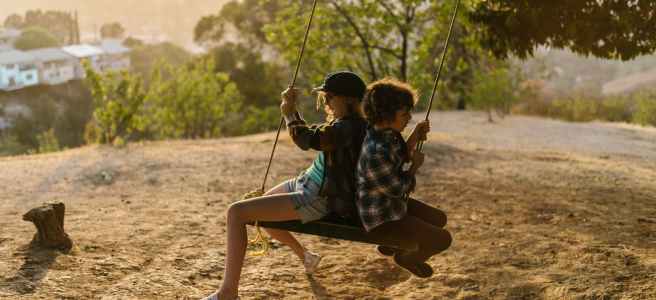Why I choose to speak my mind and defend science, even when it costs me.
Actually, I would like to dedicate this piece to those who have listened, who thought, and who were willing to engage with uncomfortable emotions in the mission to prevent child sexual abuse. Thank you. I know it’s not easy, it’s literally the opposite of what we all want to do in the moment. I appreciate you and the effort you have invested to protect children. Don’t leave yet, we need you.
I have lost track of how frequently I’ve been told to “tone it down” or “rephrase what I do” or, simply, “to be quiet.” I’ve heard this often enough in my private life because for those who know me, know that I tend to talk…a lot. I’m writing here about how I’ve been told to be quiet about my professional work because it makes others uncomfortable. The funny thing is, I never heard this when I worked in Germany. Perhaps I was more protected working as part of a multi-center consortium project, but I was allowed to voice opinions, ask questions, and talk about my work without fear of reprisal. It has not been that way since I relocated to the U.S. and began employment within the American university system.
The premise here is simple: we must learn how to talk about child sexual abuse if we want to be successful in preventing it. We have to acknowledge the it of child sexual abuse; that abuse happens, that its often perpetrated by someone we know, and that it has likely happened to someone you know. I’ve spent my career so far focusing on the first two points – the behavior of abuse and the person who perpetrates it. Without knowing more about these things, we will be shooting in the dark when it comes to protecting the third point – the victims and survivors. I’m sure we can all agree that the victims and survivors of sexual abuse deserve all the support and evidence-based treatments we can offer. But do they not also deserve to not have been put in the position of being abused in the first place?
I know that not everyone agrees with what I say, that’s ok. We’re not meant to. Debate is healthy, relevant, and required if we are going to be successful in making the world a safe place for all children. Yet it is those individuals who have approached me to say “Thank You” for opening their eyes, for making them think, for saying the things out loud that they had been told were “off limits.” It doesn’t happen often, but every once in a while I will get a comment from someone who sits back and thinks that what I say isn’t completely insane. For those who say or write it to me, your words mean more than you can imagine. Thank you.
It is possible to prevent child sexual abuse. It is also possible to sit with uncomfortable feelings and to let those feelings guide our behaviors. Child sexual abuse is neither inevitable nor impossible to prevent if we are willing to approach it in a knowledgeable, evidence-based manner. It’s the “we need to understand that pedophiles/minor attracted people/persons with pedophilia exist” bit that gets most people reacting negatively (and is a really effective way of ending a conversation too). The truth of the matter is – quite simply – that people with pedophilia do exist and do live among us. As long as they are living normal, law-abiding, healthy lives (like the rest of us), there is no need to worry. It’s just a waste of our limited resources. We should start worrying when those individuals with pedophilia feel like viewing Child Sexual Abuse Material (CSAM) or perpetrating Child Sexual Abuse (CSA) is acceptable or worth doing. Or when they feel like they don’t have the support they need to continue living their normal, law-abiding, healthy lives (as I’m sure many of us do from time to time). This is when we should worry and when we need to step to the plate to make sure it doesn’t happen. This is when the adults in the room need to show up and do the hard work.
No, I’m not talking about “killing all the pedophiles.” Beyond the absurdity of this statement, this will do nothing to actually protect children. This rhetoric serves only to throw fuel on the fire and make it more difficult for struggling individuals to reach out, seek help, and get better. Remember, it is desperate people who do desperate things at desperate times (thanks to Dr. Cantor for that lovely quote). Saying “kill all the pedophiles!” or “lock them all up!” or posting memes of guillotines, shredders, or other weapons does not help. It may feel good in the moment, but it will have the opposite effect in the long-term. Using this language creates an atmosphere of hate, one in which no one is likely to come out, seek help, or act appropriately. I know we can do better, so let’s be better. Let’s make this world safer for kids, eh?
If we can do better, how do we do it? What concrete things can we, especially as parents or family members to young children, do to make the world a safer place for our children? While this is not an exhaustive list, it does address some of the more critical areas that require attention and energy.
- Talk about sexuality with your children. This is particularly true for families who live in sexual education deserts, where access to scientifically accurate, developmentally appropriate, comprehensive sexual education material is likely banned or significantly limited in access. If we are going to prohibit professionals from talking to our children about sex, then we *must* be willing to do it ourselves. There is no other way. But the caveat here is that we cannot cop out and avoid talking about it or give cursory information. We must be willing and able to step up to the plate and talk about the good, the bad, and the ugly of human sexuality with our children. To do otherwise sends the message that you (as the parent/caregiver) are not a safe resource to go to if anything were to happen to your child.
- In addition to #1, support initiatives to implement comprehensive sexual education in your area/state. This is critical if we want to ensure all children are provided the necessary tools and skills to prevent sexual abuse. Children deserve (and have the right) to know about their bodies, how they work, what the names of organs are, and how to maintain their own boundaries (i.e. consent). Sexual education does not teach your child how to have sex. Never has, never will. Instead, it is entirely devoted – the developmentally appropriate, comprehensive versions that is – to teaching children from a young age what their bodies are and can do, and that they *always* have the last word in what happens to their bodies. That is what consent is all about. Support these programs today to ensure your children have all the tools they need to have happy and safe childhoods.
- Support initiatives in your area that address poverty, homelessness, family support, and violence prevention. Many cases of abuse (broadly meant) occur in situations where families simply did not have the resources to function adequately. Poverty is a big driver of multiple types of violence. Homelessness increases this risk. Help your community to do right by everyone, not just those with money.
- Education. Many people do seem to support the premise of “well, if a pedophile needs help to keep from offending, then they should go get it!”, even to the extent of believing that therapy should be mandatory for all pedophiles. While that may seem like a positive move, it’s a bit shortsighted. First, not every person is going to need mental health care. Second, if we support pedophiles getting help before they offend, then let’s offer it! The challenges here are aplenty.
- First, we don’t have enough clinicians to do this. We ares struggling to find enough clinicians to treat the many individuals sentenced through the judicial system to mandatory sex offender treatment programs (SOTP), let alone have enough who are also willing and able to work with non-offending individuals. That brings me to the next point.
- Second, willingness of clinicians to work with this population. Many therapists, understandably so, do not want to work with individuals attracted to children in any capacity. I get this and completely support it. If a therapist is to be successful, they need to be able to develop rapport with their clients. If – for any number of reasons – a clinician feels they cannot do this, then it is their professional responsibility to refer that client elsewhere. This is not a sign of a bad therapist. But when the numbers of willing clinicians is so low that those who seek out treatment are unable to locate one or get an appointment, then we’ve only successfully made a bad situation worse.
- Third, to help with willingness, we must offer training opportunities that help our up-and-coming therapists decide whether they would like to work with this population or not. In my own educational experience, I have found that many students would be interested in working in this field, but don’t know how to get into it. So they move to other fields that have easier onboarding processes. Not necessarily bad, but we can do better at encouraging students to pursue opportunities here.
- Fourth, we should be developing actual graduate programs that teach therapy students the best practices of working in SOTP and with non-offending individuals. The treatment needs of someone who has committed a sexual offense are not necessary the same as someone who hasn’t. So it is not a simple generalization of teaching SOTP to apply to other groups. We should be advocating for graduate clinical training programs to include coursework on this population, with associated internships. We’re not fully there yet, but we are getting there.
- Fifth, and finally (though again, this list is not exhaustive) we should advocate for a system that is more protective of therapists and their clients. We have lawyer-client confidentiality, why don’t we have a version of that for therapists? Germany does. And it has worked wonders for them to develop and implement prevention programming that directly targets non-offending individuals and those who have previously offended but who are not yet in judicial custody (so called “darkfield offenders”). Perhaps something of this nature here could radically change the sexual abuse landscape because those who want help could actually get it before anything harmful happens.
- Support prevention initiatives. We at Prostasia Foundation cannot do the work we do without the support of our members and stakeholders. This is true for all non-profits that do prevention work – regardless of method, stakeholder group, or vision. We do the work we do to fill a crucial need in the community and without public support, we might as well close shop and move on. That’s not what the children in our communities need. They need the adults around them to step up, volunteer, donate, and push for reform that creates the world they deserve to live in.
- Finally – push your lawmakers to provide more funding to organizations doing the work to prevent sexual harm to children. While we rely on the financial support of our members and donors, it is but a drop in the bucket for what organizations of this nature need to keep doing the work they do. As a society, we should absolutely prioritize the use of public funds (i.e. tax dollars) to protect our children. We should want to invest our money in initiatives that are designed to make the world safer, healthier, and more joyful for us all.
Our children deserve adults who will show up for them. Our children deserve a world designed with them in mind, in such a way that allows them to ask questions, seek information, and grow without fear of trauma. That is what I stand for, that is what Prostasia Foundation stands for, and that is what each organization in this realm should do.
I refuse to be quiet because it makes others uncomfortable. Children deserve better than our silence.





